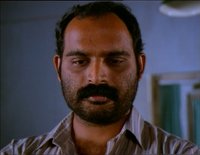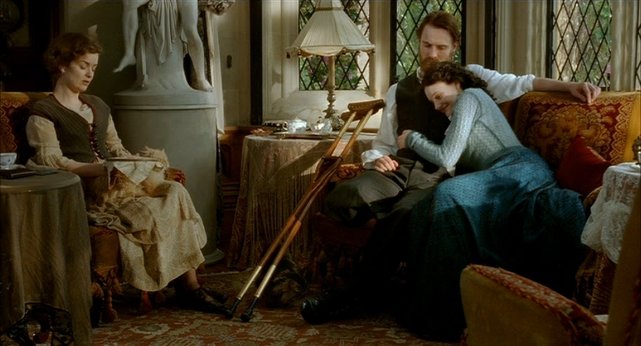from wordgathering.com
Diane Kendig
SPEAKING EVEN MORE OF MARIA BLANCHARD:
A review of 26, Rue Du Départ, Érase Una Vez en París (1)
This new hour-long Spanish documentary by Gloria Crespo on the Spanish painter, Maria Blanchard, is a typical talking-heads treatment of the artist’s life and times, but such heads as are talking here! Spain’s top art critics, curators, feminists, and writers, as well as Blanchard’s relatives, friends, and relatives of friends converse alongside footage of Paris in the early 1900s and images of Blanchard’s work. All of them are hoping to rescue this artist’s reputation from near-oblivion and place her in the pantheon of her contemporaries such as Picasso (who came and walked in her funeral) and Diego Rivera (with whom she once shared a studio.)
The film argues that both her gender and her disability worked against her reputation, or even, we might say, were used against her in her own time and the decades following. Her curator at the Queen Sofia Museum in Madrid, María José Salazar, gives one shocking example of the unfairness Blanchard’s work experienced: her name was erased from one of her canvases and replaced with that of Juan Gris, her friend but not the author of the work. Diego Rivera’s daughter goes on at length (and not with all that much sensitivity) about how Rivera would not become lovers with Blanchard because of her physical deformity, while Salazar discusses with great sensitivity how painful that relationship was for Blanchard. As the poet Lorca noted for himself, the fact that “She’s a hunchback, you know” was usually one of the first things anyone said about Blanchard.
But few have traced how her disability figures in her life and work until now. The movie does a great job of setting the record straight on both accounts. One of the myths about Blanchard is that her disability was caused by her mother’s fall from a horse during pregnancy. Among the cast of talking heads is the head of Dr. José Ramón Rodriguez Altonaga who appears seated among x-rays of many spines and begins, “No es la verdad…” ( “It’s not the truth…”) these stories about the cause of her disability. These things may be caused by a variety of factors, he says: “It may be congenital, it may be genetic, but no one is to blame.”
I felt both edified and chagrined to hear this—chagrined because I myself had passed along that myth in one of my own poems and in an essay (2). I excuse myself on the basis that when I began to write about Blanchard in 1986, there were no images of her or her work available to me, and only two essays in English. One was by the poet Federico Garcia Lorca (3), who was friends with Maria’s best friend Concha Espina, and I never thought to question it. And yet a friend of mine, Maria Bonnett, a nurse by profession and art lover by avocation, sniffed the lie out early, writing to me, “I am curious about her disabilities…[concerning the fall during pregnancy] I suspect that wasn’t her true diagnosis. Fetal injuries are rare in cases of falls…Her deformity appears to be more suggestive of osteogenesis imperfect, or brittle bone disease. Not much was known about this disorder in the early 1900s. At that time, most congenital malformations were blamed on…the mother. I hope more research will lead to the discovery of her illness.”
The cultured might say, “Well what difference does it make? The art is what is important,” but Bonnett answers that for me too, “Maria’s illness must have caused her great pain…struggl[ing] daily to do the most routine tasks that able-bodied people take for granted. Her painting, Boy with Ice Cream says it all. I look at the boy—happy, carefree, munching on his treat. I see the little girl behind the cart, reaching with great effort to get some of the sweetness of life. A crutch is on the floor in the foreground. How telling!”
This painting and many others certainly are “telling,” or, as we like to say in the field of creative writing, “showing.” Especially her later paintings—women and children, the girl with the toothache, this boy with his ice cream cone, have a lot to tell us. In addition, Maria’s earlier, cubist paintings have a lot to teach us about that movement, about Maria’s talent, about that time and place and women’s time and place. Among those works, her painting Woman with a Fan is among my favorites.
Currently, the film is only available in Spain, but I think Americans in general and certainly Wordgathering readers would find it moving and instructive. I have noticed that a person posting on the Discussion Board of the Temple University Disability Studies program board has noted that the effect of Blanchard’s kyphosis on her work might be a rich area for disability studies. When I asked Crespo about the possibility of bringing the documentary here, she said that the investment of time and money for subtitling, copyright and other issues and tasks seem daunting to her right now as she is trying to finish the book.
Having written on Frida Kahlo for years, too, I find both her and Blanchard fascinating and admirable in the excellence they were able to achieve in their chosen endeavor despite debilitating pain and disability. However, the more I come to know about Blanchard, the more I admire how she went it alone and insisted on being the equal “not the helper of but on the same plane as” the male artists around her, as one of the critics notes of her relationship with Gris. Her stubbornness may have cost her some fame in her own time. (For example, in the depths of her penury, she once bought back her painting, Two Sisters, from a collector because she felt the collector could not appreciate what it meant to her, sister of two sisters that she was.) I am hoping that her stubborn insistence on color, quality, meaning, and effort in art are what we can use today to promote her legacy in our time and someday soon, in our country as well as her homeland.
NOTES:
(1)The film is subtitled [translation mine}, A documentary about the life and work of Maria Blanchard. It is written, directed, and produced by Gloria Crespo MacLellan.
(2)Most embarrassingly, in this journal, Wordgathering, issue 15.
(3)”Elegy to Maria Blanchard,” in Deep Song and Other Prose by Federico Garcia Lorca. Edited and Translated by Christopher Maurer (NY: New Directions, 1980.)
Diane Kendig’s fourth and most recent chapbook is titled, The Places We Find Ourselves. Her work may also be found in J Journal, Minnesota Review, qarrtsiluni, and others. A recipient of two Ohio Arts Council Fellowships in Poetry and a Fulbright lectureship in translation, Kendig has left the Boston area to return in her hometown of Canton, Ohio, which she blogs about at “Coming Home”.














